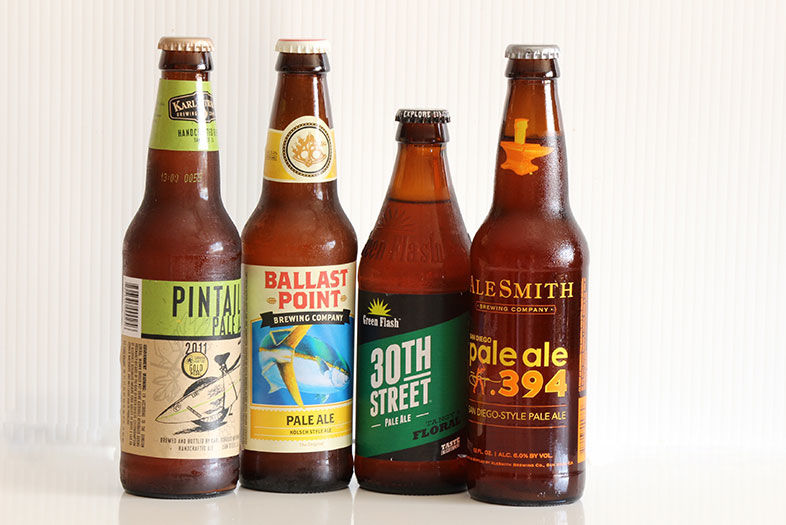For the longest time, it was a challenge to find a real selection of six-packs or 22-ounce bottles of San Diego pale ale on the grocery store shelves. Same thing at many bottle shops. Why have there been so few pales available in mass distribution? As one local bottle shop proprietor put it: “Nobody asks for them.”
Of course, if you’re looking for a San Diego IPA, no problem. Finding a wide selection of IPAs (and double IPAs) on shelves in San Diego is like looking for puppies at a pet store; you can’t avoid them. And that’s not going to change any time soon. What may change, however, is the relative scarcity of pale ales. Why? Well, because people are starting to ask for them.
Recently, two things have happened that have boosted the overall awareness and appreciation of high-quality pale ales. The first was the widespread trend (call it a “mania”) to brew “session beers,” which focus on delivering big flavor while keeping ABV (alcohol by volume) levels low. Brewers all over the country have been experimenting and innovating new ways to create great “session” options that patrons can drink more than one of without getting stupid (some IPAs or double IPAs will have you trying to pull your underwear off over your head after the first pint).
The second thing that’s happened (and more recently) is a handful of brewers have re-focused their attention on making and marketing pales that deliver the big hoppiness San Diego drinkers crave, but putting them in a lighter, crisper package. Karl Strauss’s Pintail Pale Ale and Green Flash’s 30th St Pale Ale have been perfecting this package for some time now. The folks at Ballast Point credit their pale ale (formerly Yellowtail) with being the very foundation of their company—the “beer that launched Ballast Point,” as they say. And then there’s AleSmith’s .394, which managed to define its own, new style of pale ale—one that’s perfectly balanced between big hoppy flavor, relatively tame bitterness, and a crisp, clean, aromatic, character that keeps you coming back for more. I personally credit .394 with making me take a fresh new look at the joys of great San Diego-style pale ales.
Lots of excellent pale ales are also being produced at the smaller breweries in town—they’re not widely distributed, but they are available in tasting rooms. Among the best I’ve tasted are Monkey Paw’s Patas Pale Ale, Nickel’s JPA (Julian Pale Ale), Mike Hess Hartley Pale Ale, Acoustic’s Greatest Hits Pale Ale, and Bolt Brewing’s Citra Pale Ale.
Big, hoppy IPAs are great for bright aromas, rich mouthfeel, and bold flavors, but, in my opinion, they tend to shine best when enjoyed on their own—cold and freshly tapped. Pale ales, on the other hand—with their lighter body and crisper nature—are more consistently refreshing and quenching on a hot day by the pool, and they also tend to pair better with food. So, don’t forget about the merits of the IPA’s little sibling; the pale ale may seem like the “lesser” beer, but it will surprise you with its balance, flavor, and ability to get along in almost any situation. Next time you’re in your favorite bottle shop, ask for one!

Beyond the Pale
PARTNER CONTENT
San Diego Pale Ales | Photo by Bruce Glassman












